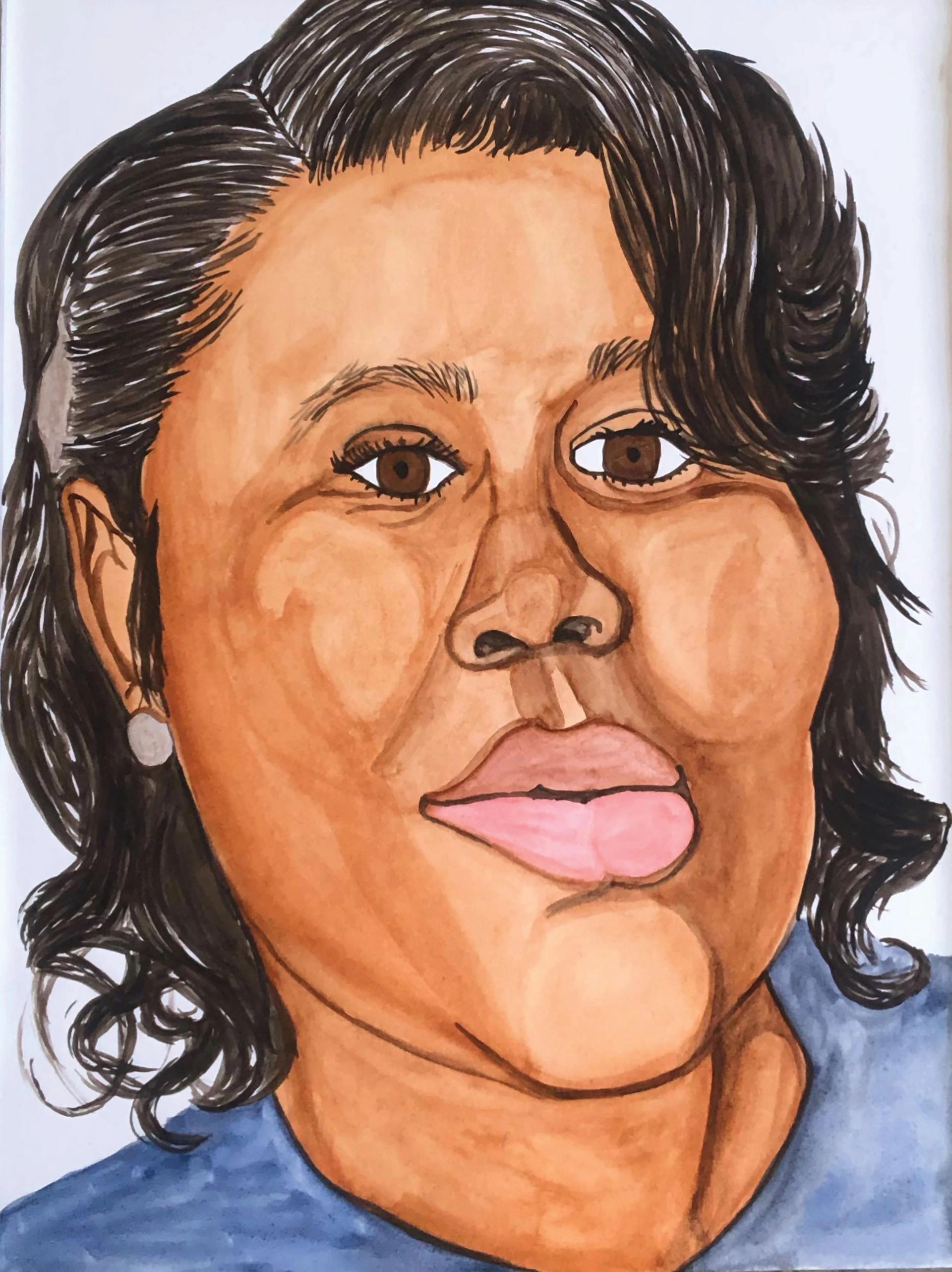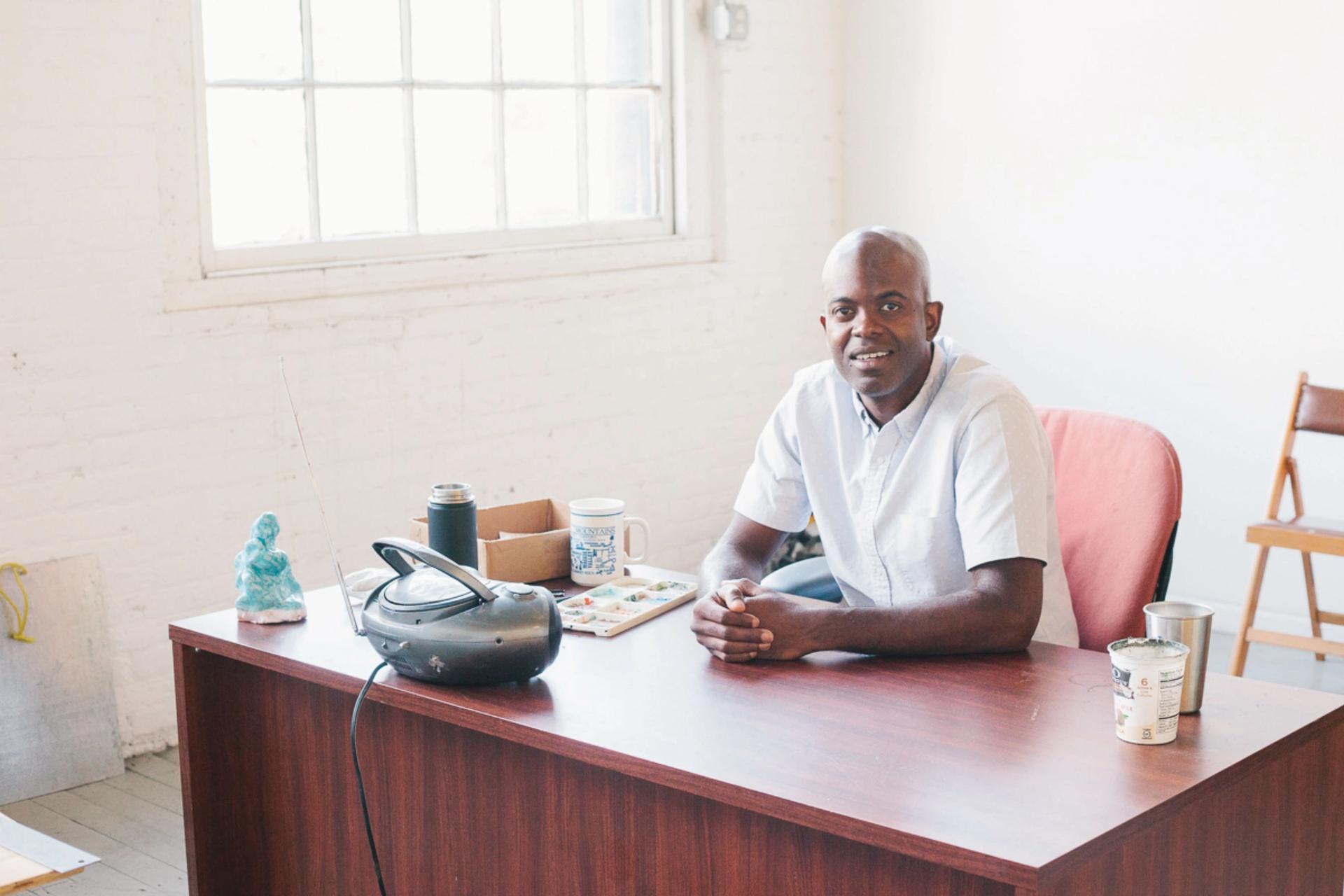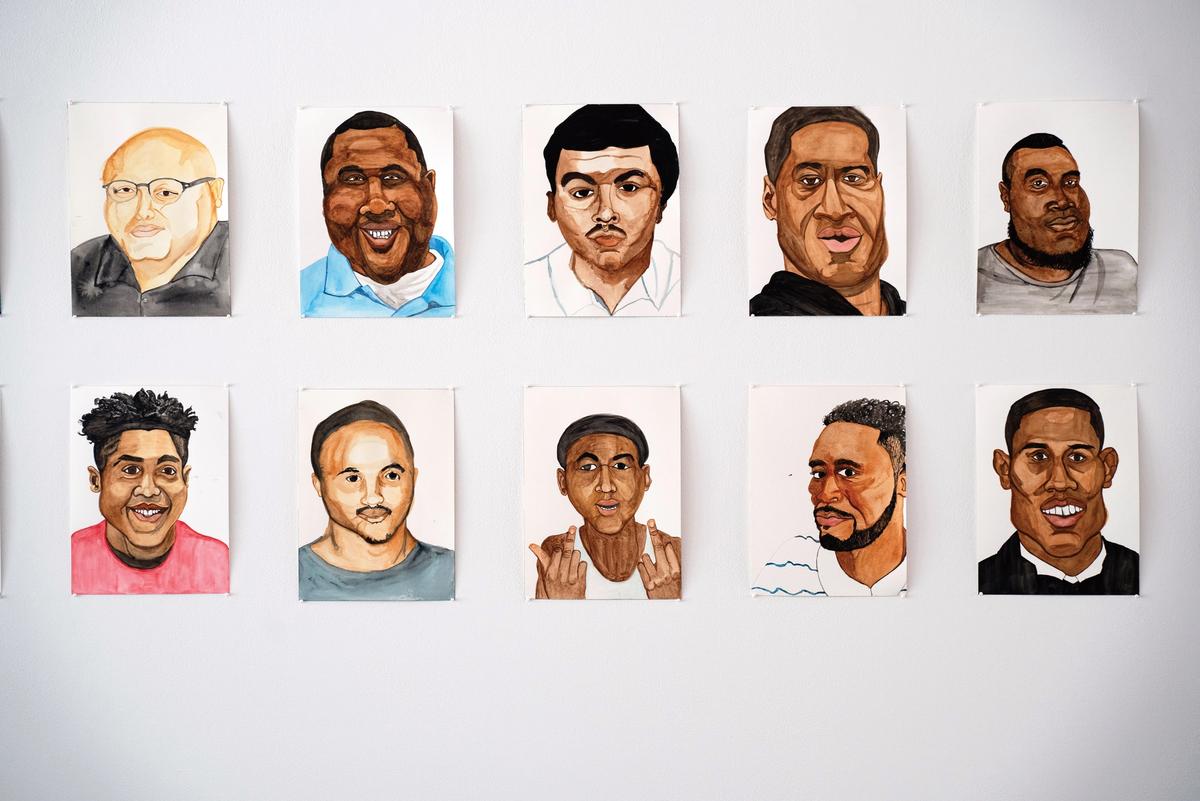Rudy Shepherd is a self-proclaimed healer. Sometimes he administers his treatments wearing a black bodysuit and boulder-shaped mask, other times his salve of choice is watercolour paint. And his patient is American society, sickened by the endemic problems of racism and violence.
His first remedy was a series of Black Rock Negative Energy Absorbers—large concrete sculptures that he started installing in 2006 to cleanse neighborhoods of destructive forces. “People really seemed to get it and connect with the humour in it,” says the New York-based artist, who calls himself The Healer while ceremoniously activating the absorbers. “Like, this magic sculpture’s gonna fix society? But also the sentiment of wanting to help and fix things, invoking magic.”
Soon after that, Shepherd started another project when he saw people reading a New York Post issue in 2007 with an all-caps headline: “FRY BABY”. The article reported on the trial of Ronell Wilson, who had killed two police officers, and the death sentence he was given, the first in New York in 50 years.
Shepherd read Wilson’s complicated story, but it was the cover page’s visual message that stuck with him. “What are the effects of these kinds of stories on people like myself, people who look like this guy?” Shepherd asks, aware that stories villainising Black men impact all Black men. “It spills over onto other people and reinforces racism, fear.”
Shepherd returned to his studio and painted portraits of Wilson and the officers. He has painted more than 400 watercolour portraits of individuals from the news cycle ever since, in a uniform 12- by 9-inch format that makes the series look like a tragic yearbook page.
A selection of 25 of his portraits are now on view at The Aldrich Contemporary Art Museum in Connecticut, as Rudy Shepherd: Somebody’s Child. “This exhibition was conceived to spotlight law enforcement’s fatal toll on Black and Latinx lives,” says the show’s curator Amy Smith-Stewart. “People are engaged and spending a lot of time with the work.”
I didn’t know that this image of Breonna Taylor was going to be the one that everybody would use. We all probably chose it for the same reason. She’s just a beautiful, young woman—that’s who got killed.Rudy Shepherd
The show includes portraits of George Floyd, Breonna Taylor, and Ahmaud Arbery—who Shepherd painted before they became the faces of the recent wave of Black Lives Matter protests. “I didn’t know that this image of Breonna Taylor was going to be the one that everybody would use,” he explains. “We all probably chose it for the same reason. She’s just a beautiful, young woman—that’s who got killed.”

Rudy Shepherd, Breonna Taylor, a 26-year-old emergency medical technician shot 8 times by Louisville Police who entered her apartment without knocking (2020), watercolour on paper, 12 x 9 inches Courtesy of the artist
Shepherd wants to humanise people whose lives have been flattened in the news. “You’ve heard the story X amount of times, this side and that side. Who is George Floyd? Like, who is this?” Shepherd says of his portrait of the 46-year-old Minneapolis man, who died after a police office pushed his knee against Floyd’s neck for seven minutes. “Not just, did he have it coming; all of that minutia of, was he the good guy or the bad guy? I’m trying to be like, this is George Floyd.” The quiet portrait is one of the most frequently photographed at The Aldrich.
The artist is now painting a landscape of the Wendy’s drive-through where Rayshard Brooks was shot by Atlanta police officers in June. Other scenes he has painted include a car deliberately driving into a crowd of protesters in Charlottesvile and the yellow vest protests in Paris.

Rudy Shepherd in his studio Photo: Keely Thomas-Menter
“I think about it like history painting,” Shepherd explains of these works. “It is both a thing that happened, but it also represents this summer and all the protests that went on for Rayshard Brooks and George Floyd and everybody else.”
When asked if his weekly portrait painting practice makes him like one of his negative energy absorbing sculptures, Shepherd chuckles and says, “Yeah, I guess so in a way.” Sometimes he questions why he has decided to spend his time doing this.
“Everyone else just reads the story, says ‘Wow that’s rough,’ and then just does whatever else they do. Maybe they go out into the streets and protest, and that’s what their role in society is,” Shepherd says. “Mine is to take the time and memorialise the person and archive this in a different way from how it gets archived by the media.”


